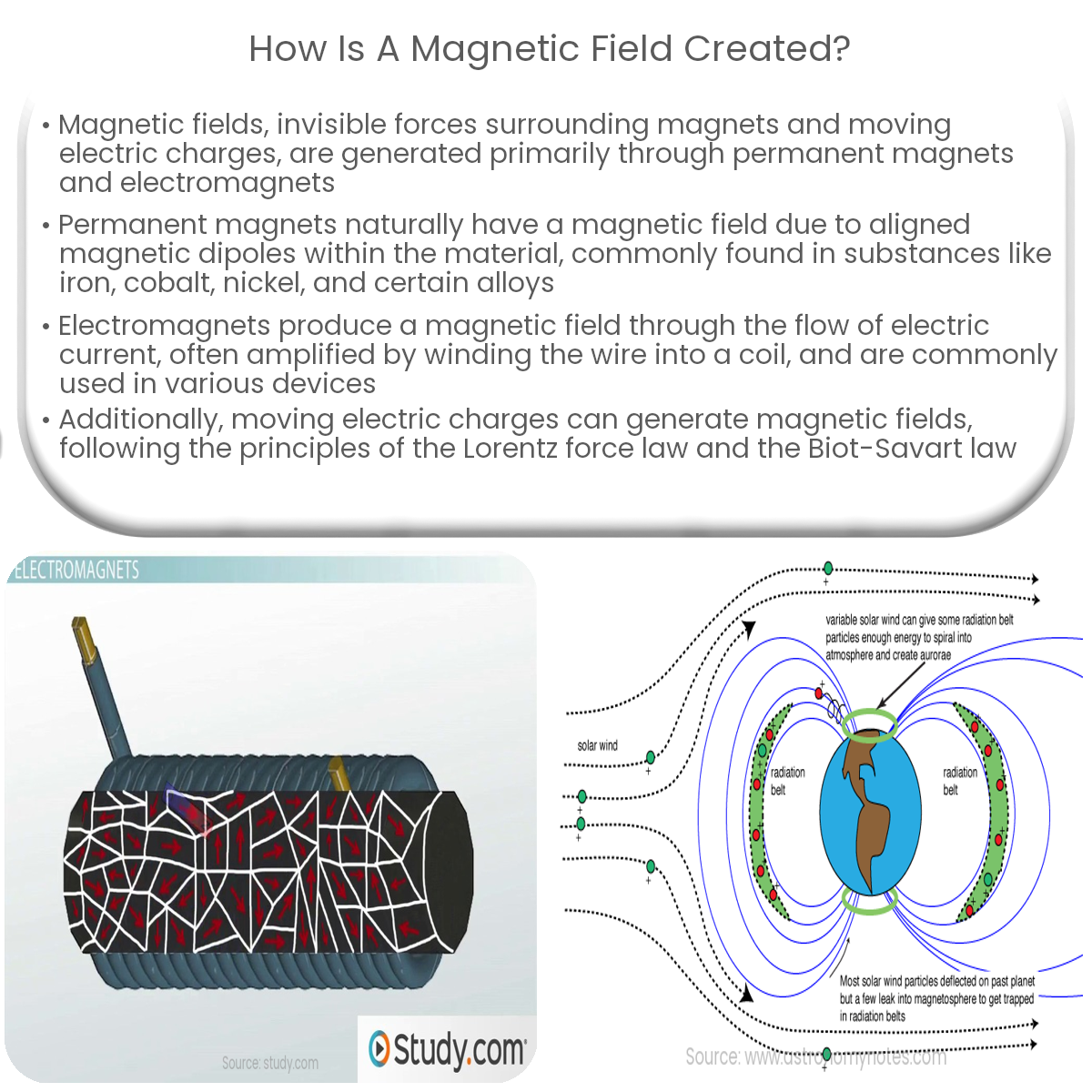A magnetic field is created by permanent magnets, electromagnets, and moving electric charges, influencing magnetic materials and electric currents.
Creating a Magnetic Field
A magnetic field is an invisible force that surrounds magnets and moving electric charges. It is responsible for the attractive and repulsive forces between magnetic materials. But how is a magnetic field created? There are two main ways: through permanent magnets and through electromagnets.
Permanent Magnets
Permanent magnets are materials that possess a natural magnetic field. This field arises due to the alignment of the magnetic dipoles within the material. The magnetic dipoles are tiny magnetic regions composed of groups of atoms. In a magnetic material, these dipoles align in the same direction, creating a net magnetic field.
Common examples of permanent magnets include iron, cobalt, nickel, and certain alloys like Alnico and NdFeB. These materials have a strong internal magnetic structure that retains its magnetic properties, even without an external force.
Electromagnets
Electromagnets, on the other hand, create a magnetic field through the flow of electric current. According to Ampere’s law, a magnetic field is produced around a wire carrying an electric current. When an electric current flows through a wire, it generates a magnetic field around it, with the field lines forming circles around the wire.
To concentrate and amplify this magnetic field, the wire is often wound into a coil, creating a solenoid. The magnetic field inside the solenoid is stronger and more uniform, making it ideal for various applications. Electromagnets are commonly used in motors, transformers, and other devices that require the control and manipulation of magnetic fields.
Interaction with Electric Charges
In addition to the methods mentioned above, magnetic fields can also be generated by moving electric charges. According to the Lorentz force law, an electric charge moving through a magnetic field experiences a force that is perpendicular to both the velocity of the charge and the direction of the magnetic field. This force causes the charged particle to move in a circular or helical path, depending on the angle between its velocity and the magnetic field. This motion of charged particles, in turn, generates a magnetic field, as dictated by the Biot-Savart law.
In summary, magnetic fields are created by permanent magnets, electromagnets, and moving electric charges. These fields play a crucial role in various applications and technologies, enabling the control and manipulation of magnetic materials and electric currents.


